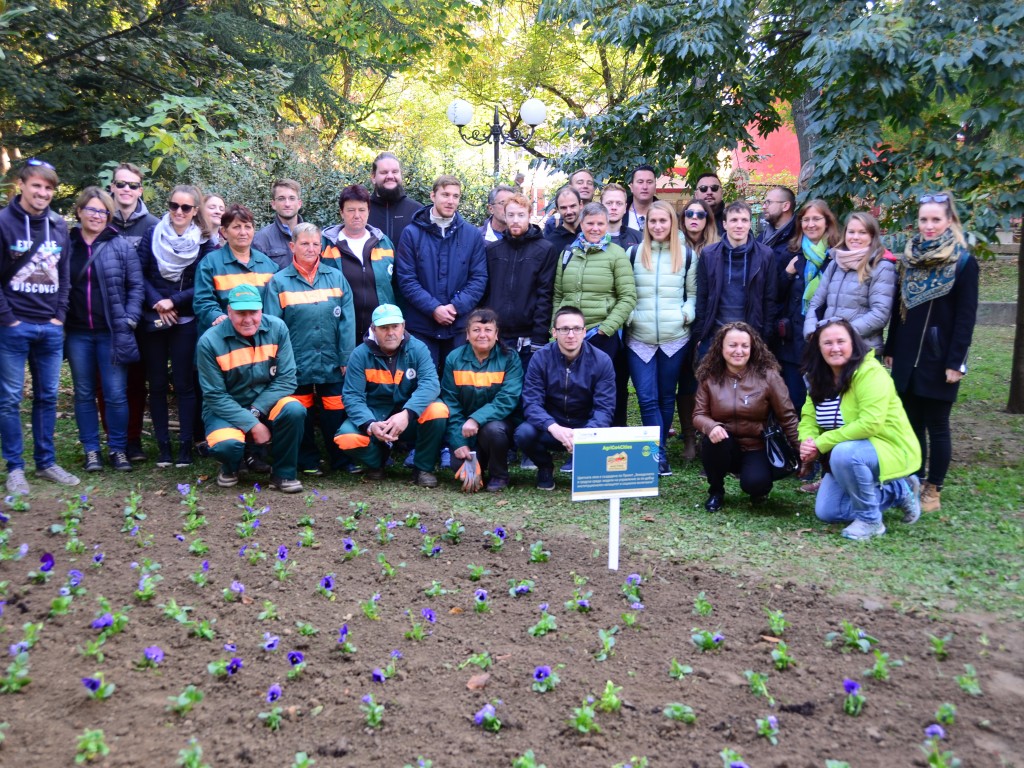AgriGo4Cities - Fostering social inclusion by urban agriculture
10-08-2021
In many urban areas across the Danube region, the participation of citizens in urban governance decreases. What's more, due to low capacities of public authorities to ensure such participation, disadvantaged groups, such as the poor, homeless, Roma, migrants, elderly or women with children, face an increasing risk of exclusion. Having first-hand experience with tackling similar challenges in their countries, eleven partner organisations joined forces in AgriGo4Cities project, introducing urban agriculture as a powerful tool to address this complex issue.
April 12, 2021
 Image: AgriGo4Cities
Image: AgriGo4Cities
Cities and their governance have a fundamental impact on the quality of life of urban citizens. Vice versa, active involvement of city residents is an important part of good policy making and urban governance. In 2017, a cooperation project supported by Interreg Danube decided to stimulate public participation in the Danube region by means of urban agriculture: a practice of cultivating, processing and distributing food in or around urban areas. While this increases access to locally grown food and can contribute to local economic development, targeted urban agriculture governance plans can also contribute to poverty alleviation and social inclusion of the urban poor and other vulnerable groups.
“The best way to facilitate the integration of vulnerable groups is when they can mix with other people in the community.”
Jani Kozina, Research Centre of the Slovenian Academy of Sciences and Art
Urban farming transforming the city
Building a community is the primary aim of the partnership consortium of municipalities, research institutions and environmental NGOs involved in the AgriGo4Cities project. In a pilot phase, an urban agricultural project was carried out in five municipalities of the Danube region. One of them was Municipal district Prague 9, former industrial, now rapidly developing residential area, located within the capital of the Czech Republic. Through participatory methodology involving various stakeholders, single mothers with children were identified as a group most at risk of social exclusion in this part of the city. To support this community, the participants decided to establish Paletka community garden, as this type of urban agriculture project seemed to fit the particular needs of the group.
Besides involving the target group in the process, significant partnerships were developed with local NGOs, maternity centres and also the kindergarten Pod Krocínkou, which was conveniently situated next to the site of the future community garden. "Kindergarten, among other things, tries to involve vulnerable groups into everyday life as well. It cooperates with the local young offenders institution. I wanted to establish a community garden there, permanently bringing this already created community closer together,” says Libuše Kopecká, director of the kindergarten Pod Krocínkou.
For an urban agricultural site, such as the community garden in Prague 9, to be sustainable, it is important to ensure long-term use of the plot and funding by the municipality. Hence, the gradually improved communication and growing understanding between the citizens and the representatives of the Municipal District Prague 9 is being considered as one of the main achievements of the participatory methodology developed by the AgriGo4Cities project. This and 20 other good practices on how to design a successful application of participatory urban agriculture were included in the Catalogue, which is the main output of the project.
Categorized into educational, social, community and therapeutic gardens, according to the included vulnerable groups, the catalogue presents a collection of successful ideas, initiatives and projects in urban agriculture. Moreover, it highlights the importance and role of public institutions in raising socio-economic inclusion of vulnerable/marginalized groups through participatory methodology.
 Platka community garden in Prague, Czech Republic. Image: AgriGo4Cities
Platka community garden in Prague, Czech Republic. Image: AgriGo4Cities
What's the future?
To what extent the project succeeds in bridging the gap between the public administrations and citizens, remains to be seen. However, it already gained wide recognition. The tool to involve relevant stakeholders and civil society into governance in the Danube region was featured by the European Commission as one of the success stories of Interreg cooperation on the occasion of its 30th anniversary.
